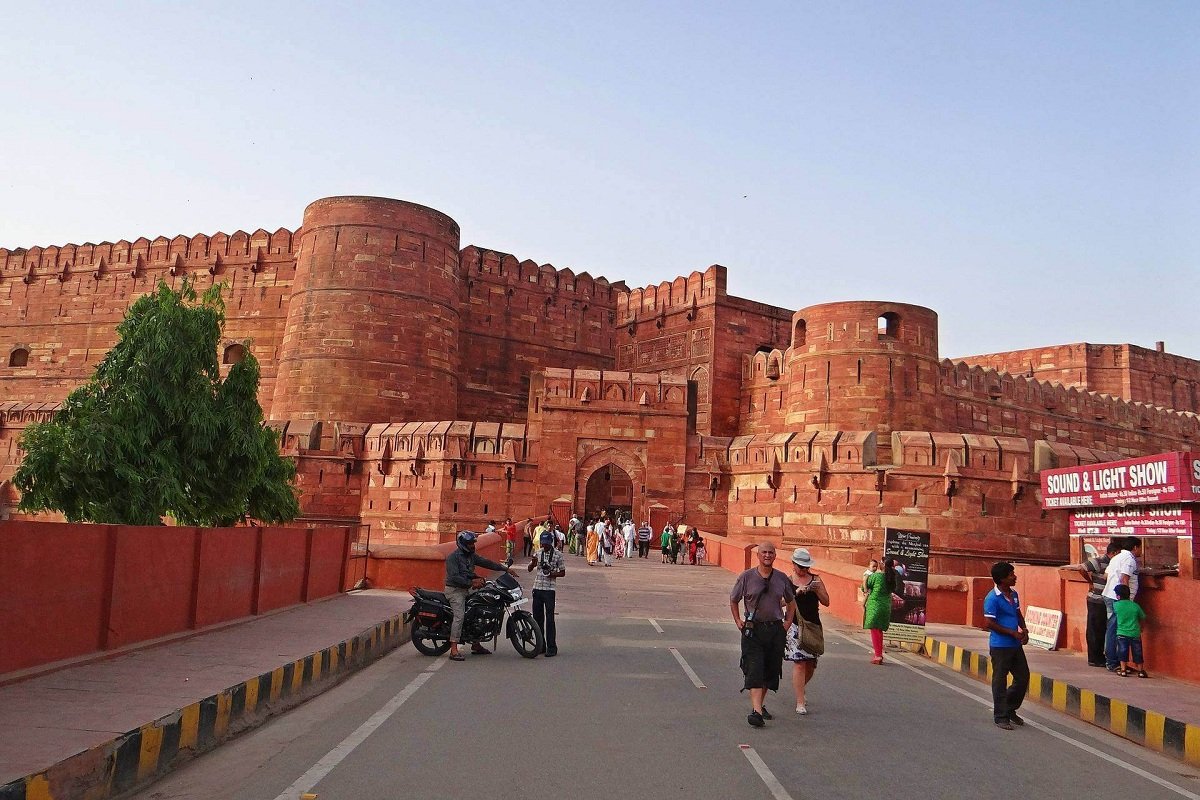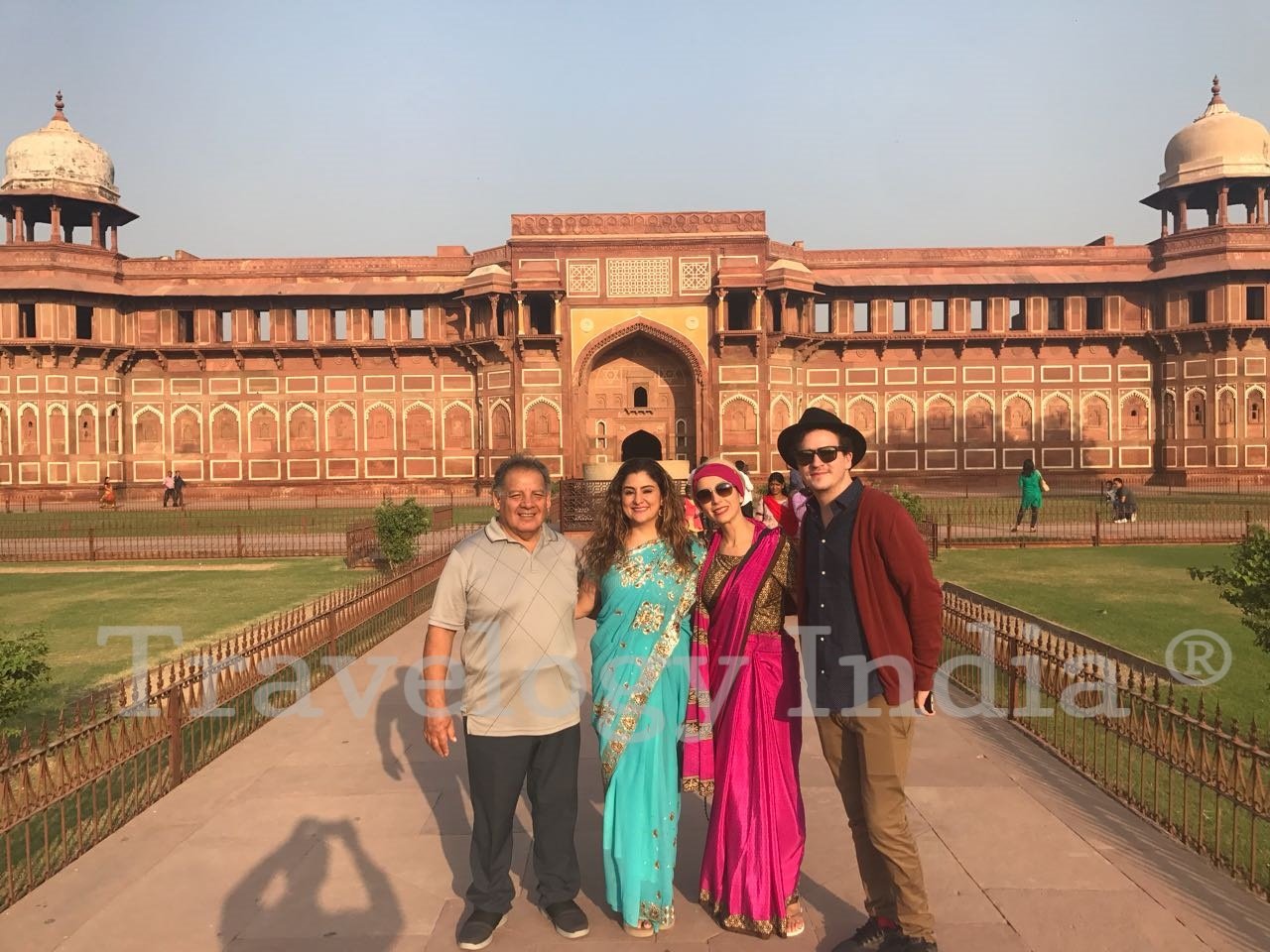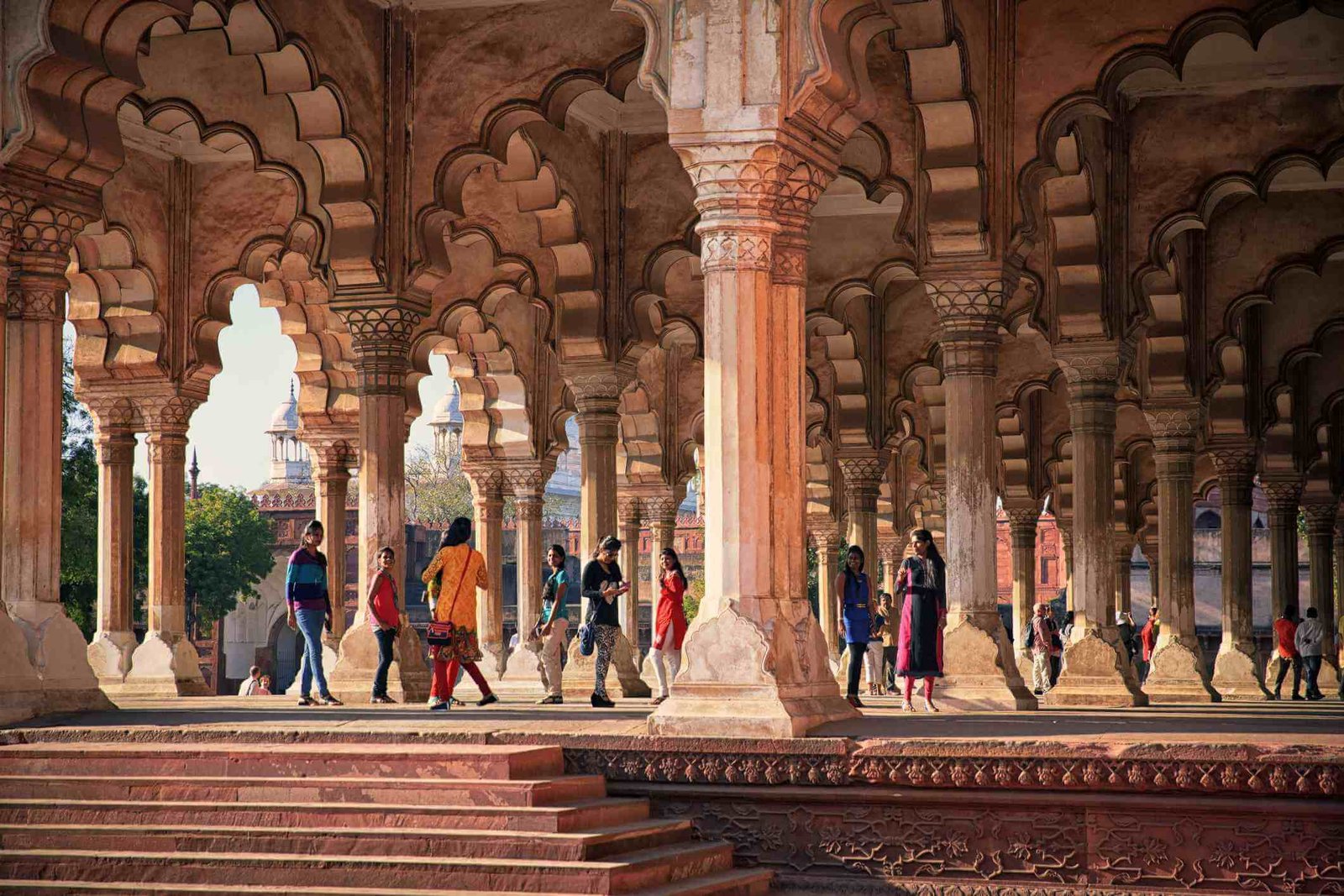Agra Fort - Historical Monuments of Agra
The historical monument, Agra Fort was built on the 16th century. It will stand near the gardens of Taj Mahal. It was built by Akbar and covers a total area of 380,000 square meters. More than 4000 workers and 8 years of hard work resulted in Agra Fort. Many impressive structures like Moti Masjid, Jahangir Mahal, Machchhi Bhawan, Diwan-I-Am, Diwan-I-Khass and Khas Mahal are present inside the Agra Fort.

Agra Fort is also called as a walled city and is also considered as the UNESCO World Heritage Site. It is considered as a tourist attractions and attracts many tourists all over the world. It is the main residence during the region of Akbar. It lost its status of the main residence after the Mughal dynasty was replaced to Delhi from Agra. It is located at a distance of 2.5 kilometres from Taj Mahal.
Why Agra Fort is so Famous?
The architecture of the fort reflects the 3 major dynasties. This fort is well known for pride, power and resilience since ancient time. This fort resembles the lavish life of Mughals. The fort is constructed with the elite elements like Belgian glass and premium sandstone etc. This is an important example that Hinduism and Islam flourished side by side during the ancient times. This Islamic structure has many Hindu temples. Due to its literacy elements and beauty, many scholars from Central part of Asia and the Middle East are eager to visit this place.
History Behind Agra Fort
The Agra Fort had undergone tremendous changes in the appearance. It had a great history and is owned by many rulers and emporers. A battle was fought between Ibrahim Lodi and Babur in 1526. After the war, Babur conquered the fort and made it as his home. He made several changes to the fort-like building a huge stepwell and many more. From then it became the important historical monument.

In the year 1530, Babur was replaced by Humayun. Many rulers then got to know about the prominence of the fort and started to invade. Later Sher Shah Suri wins over Humayun and got ownership on the fort. He made changes in the fort according to his architectural taste. The Fort was ruled by Sur dynasty over 15 years. The Fort is then recaptured by Humayun in 1555. After that the military commander and general of Adil Shah Suri, Hema Vikramaditya captured Agra. He chased the soldiers fled to Delhi and Tughlaqabad battle ensued between him and Tardi Beg Khan, the Mughal army commander.
Mughals Region
After Tardi Beg Khan losing the battle, Hema Vikramaditya was praised as a king by himself. Later after 1 month, Akbar and his army defeated Hemu. Again fort came under the ownership of Mughals. In the history, the fort is known as Badalgarh and it was built with only bricks. Akbar reconstructed the fort with red sandstone. The fort was later modified by Shah Jahan and it took the current form. According to his architectural taste, he destroyed some of the edifices.
The fort was captured by Marata Empire in the 17th century. The founder of the Durrani Empire, Ahmad Shah Durrani defeated Marathas in 1761. It then remained as the home of Durrani dynasty until 1785. Under the region of Mahadji Shinde, the fort was recaptured by Marathas in 1785. Later Marathas lost their kingdom in the hands of the British during Anglo-Maratha war. It remained under the leadership of the British government until 1947.
Architecture/Layout of Agra Fort

There was a significant change in the appearance of Red Fort during the region of Shah Jahan. The base of the fort was formed with bricks. The external surfaces were laid from the Red sandstone brought from Rajasthan,. Before that, the fort was built with red sandstone. Shah Jahan destroyed many structures inside the fort and built it with the help of white marble.
The wall of Red Fort is made of red sandstones and the perimeter is around 2 km. It is a semi-circle fort with its base into riverbank of Yamuna. To avoid the entry of any intruder, the wall is built at a height of 70 feet. The fort contains 4 gates of which Lahore Gate and Delhi Gate are common,. Delhi Gate is considered as the security gate and also the gate of royals. Through the main gate, one can pass through the Elephant Gate. The gate is known for the strength challenged by an elephant war and is generally used for the Indian army.
Tourists can enter into the fort through Amar Singh Gate. This gate will lead to the ticket counter. From the ticket counter, you could reach the Jehangir palace courtyard. This place is known as the surviving palace of the fort. A marvellous monument carved out of single stone, Hauz-I-Jehangir can be found in front of the Jehangir Palace. This place is used for bathing in the past.
As you move towards the east, you will find the residence of Shah Jahan, Khas Mahal. It is made of pool and marble pavilion. From here you can get a great view to Taj Mahal. From there you will come across AnguriBagh courtyard. From the garden, one can pass through the underground steps to reach rooms and passages. In the northeast of the courtyard, you can come across Mirror Palace.
In the north, one can find the Mathamman Burj, which is an octagonal tower. It is the place where Shah Jahan is imprisoned.This Palace is the best place to spot the beauty of Taj Mahal. While reaching the 3rd courtyard, you will find a private Audience which contains peacock throne of Shah Jahan. There will be a mosque for women and the royal family on the north which is named as Nagina Masjid. If you move forward, you will find Hall of public Audience and Ladies Bazaar. There will be a grave of lieutenant governor of British, John Colvin, who died inside the fort.
Agra Fort contains many tunnels and passages underground. This is often used for defensive reasons and is called the escape routes during the wartime.The most prominent tunnel connects the Red Fort with Yamuna River. These passages and tunnels are only used by the Royals and are not open to common people.
Important Structures of Agra Fort
1. Akbar’s Mahal
This palace was entirely built with red sandstone. This palace is famous because Akbar breathed his last in this Mahal.
2. Bengali Mahal
Bengali Mahal was first built by Akbar and later modified by Shah Jahan. An interesting aspect of this palace is said to be the buildings that house hidden in the palace secrets.
3. Ghaznin Gate
It belongs to Mahmud Ghazni tomb, ruler of Ghaznavid Empire. For political reasons, the gate was then moved into the fort by the Britishers.
4. Diwan-I-Am
Shah Jahan built this hall and is the first hall built using the red sandstone. To give it a look of white marble, it was later shell-plastered.
5. Nagina Masjid
It is a mosque built by Shah Jahan. It was built with white marble and is a place of worship.
6. Babur’s Baoli
It is also called a stepwell built by Babur. This place was built to deal with all the water needs in the ancient fort. This is considered as the earlier modification in the fort.
7. Shahjahani Mahal
The Shahjahani Mahal is one of the early efforts of Emperor Shah Jahan to change the red sandstone palace to palace of white marble.
8. Jahangir’s Hauz
It is a monolithic tank and built by Jahangir. This tank was originally used for bathing. It is now part of Akbar Bengali Mahal.
Sounds and Lights Show at Agra Fort
The display of lights with documentary is a tour showing the rich history of Agra Fort and the rulers including the Mughal dynasty. The duration of the show is roughly one hour similar to that of the Lights and Sound Show at Red Fort, Delhi. It is a visual treat that gives a sneak-peak into the history of Qila-i-Akbari. There are a number of awe-inspiring structures which are some of the most famous tourist spots in India. The Lights are flashed all over the walls of the Agra Fort. There is a commentory that goes on as the display happens. It takes you through the monuments within the fort in a very clear manner to understand. It is not possible to understand if you visit the fort for sightseeing. So, it is something you have to give your time and effort to watch the Agra Fort Light and Sound Show in the evening.
- Duration of Sound and Light Show: 1 Hour
- Timings of Sound and Light Show: (May vary by 15 - 30 min. So check at booking time)
- Timing for Hindi Show – 7.30 pm to 8.30 pm
- Timing for English Show – 8.30 pm to 9.30 pm
- Location: Agra Fort, Rakabganj, Agra, Uttar Pradesh 282003
Ticket for Sound and Light Show
- Indian : INR 70/-
- Student : INR 40/-
- Foreigner : INR 150/-
Best time to visit Agra Red Fort
Agra Fort is the well-known beauty throughout the year. The beauty of the fort sparely depends on the climatic conditions. There will be a total area of 380,000 square meters to be covered in the fort.
April to June are the summer months which causes dehydration and fatigue while exploring.
July to September are the rainy months which causes little inconvenience due to rains.
The best time to visit this fort is October to March. These months are winter season and the climatic conditions will be pleasing to visit the fort. Besides that due to clear skies, one can spot the famous view of Taj Mahal.
How to Reach Agra Fort
Agra Fort is located in Agra city and is just 2.5 kilometres away from Taj Mahal. It will take just 15 minutes to reach this place from Agra Railway station. You can easily reach this place by bus, car, rickshaw from any part of Agra.
Visiting Time of Agra Fort
To explore the entire fort, it will take a maximum of 3 hours. The fort will be opened on all days except Friday. It will open every day from 6 A.M to 6 P.M. It is advised to choose to explore early in the morning or late in the evening to avoid the sun.
Entry Fees of Agra Fort
- Children below 15 years - Nil
- Indian adult - Rs.40
- Foreign adult - Rs.550
- Adults of SAARC/BIMSTEC nations - Rs.90